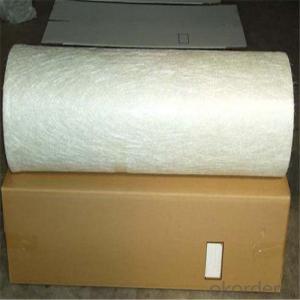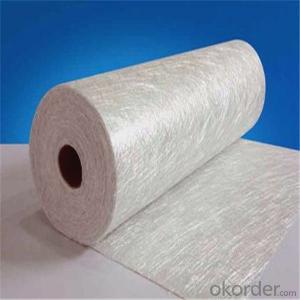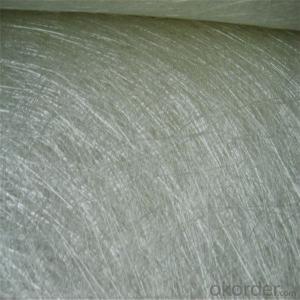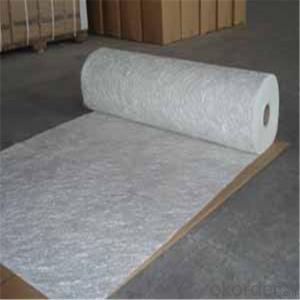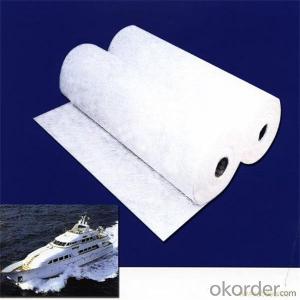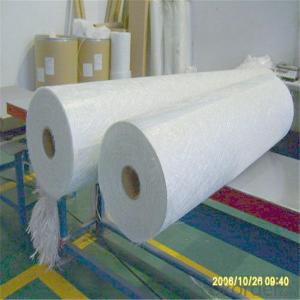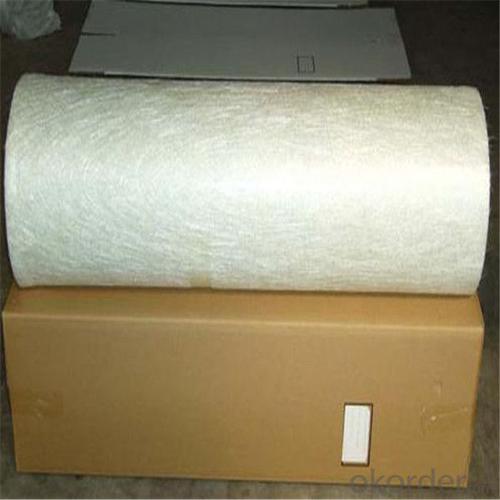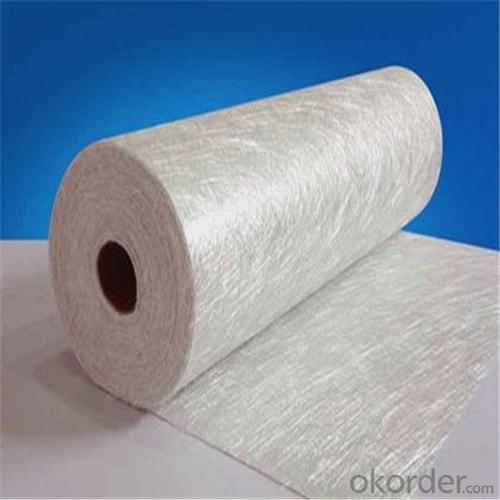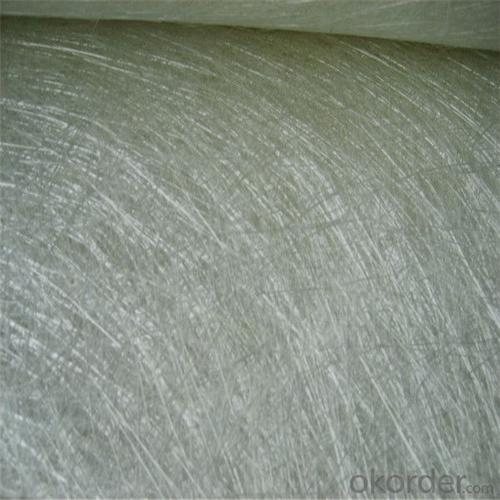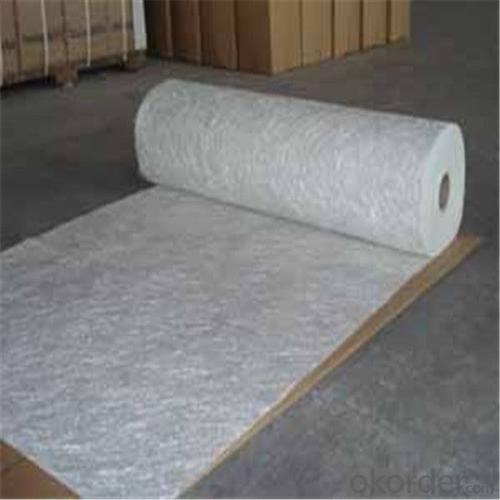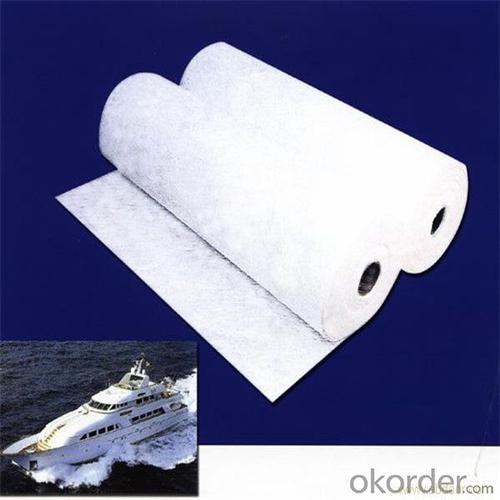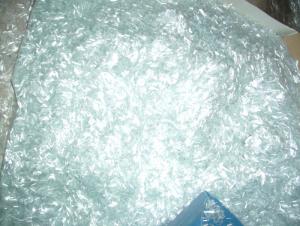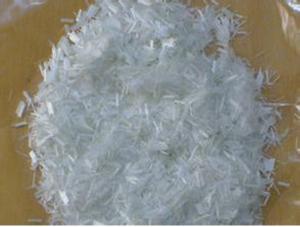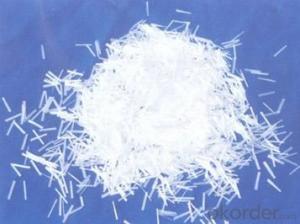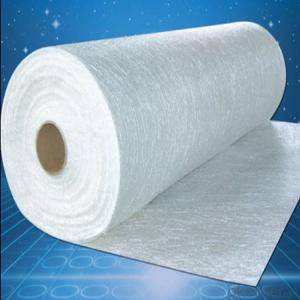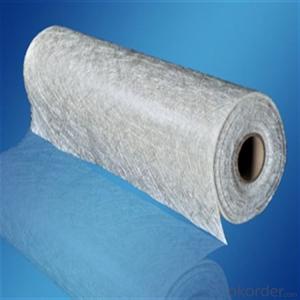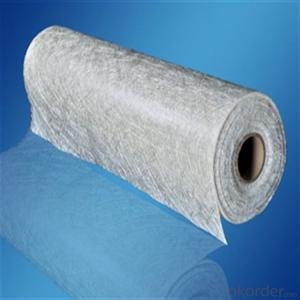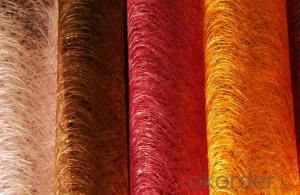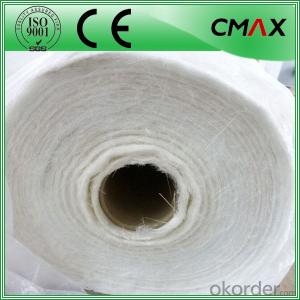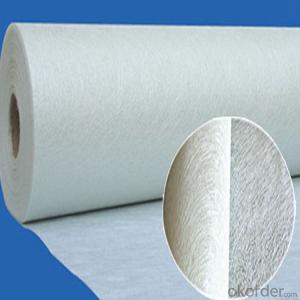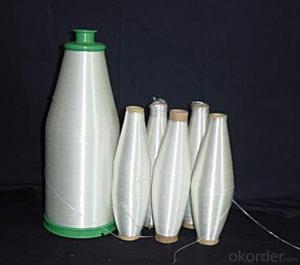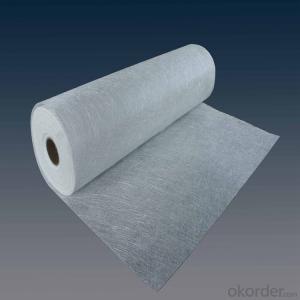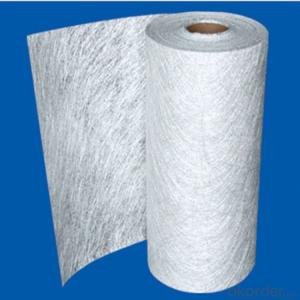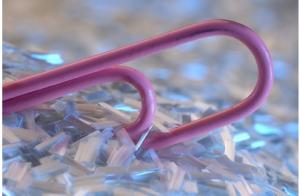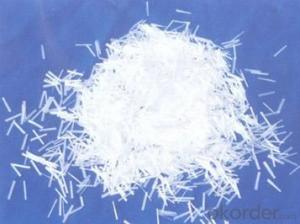Chopped Fiberglass Strands Utah Fiberglass Chopped Sand Mat for Boats
- Loading Port:
- Tianjin
- Payment Terms:
- TT OR LC
- Min Order Qty:
- 100 m.t.
- Supply Capability:
- 20000 m.t./month
OKorder Service Pledge
Quality Product, Order Online Tracking, Timely Delivery
OKorder Financial Service
Credit Rating, Credit Services, Credit Purchasing
You Might Also Like
Quick Details
| Technique: | Chopped Strand Fiberglass Mat (CSM) | Dimensions: | 450gsm | Mat Type: | Continuous Filament Mat |
| Fiberglass Type: | E-Glass | Softness: | softness | Place of Origin: | Jiangxi, China (Mainland) |
| Brand Name: | cnbm | Model Number: | 450gsm | color: | white |
| fiberglass type: | E glass | product: | e-glass powder chopped stand mats | binder: | powder or emulsion |
| width: | 1040 or 1270mm, as your requirement | weight: | 30 or 45kg/roll | paper tube diameter: | 90mm |
| outer diameter of roll: | 256mm | packing: | plastic film+carton box + pallet |
Packaging & Delivery
| Packaging Details: | plastic film+carton box + pallet |
| Delivery Detail: | 15-20days |
Specifications
1.e-glass powder chopped stand mats
2.binder:power or emulsion
3.width:1040mm or 1270mm
4.weight:450gsm
Picture
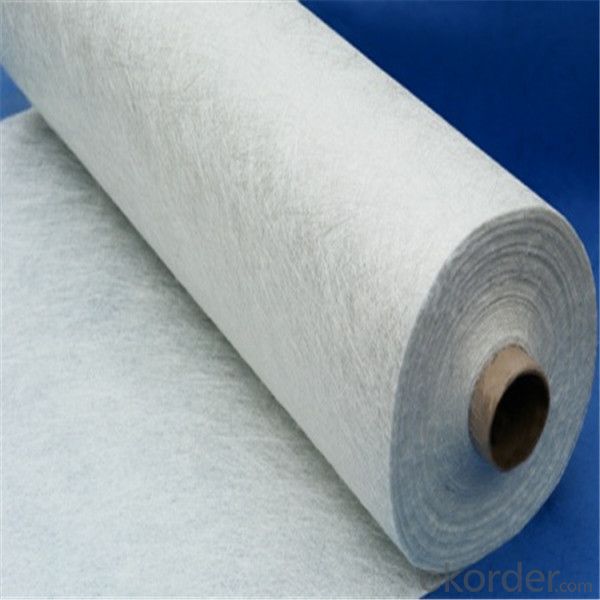
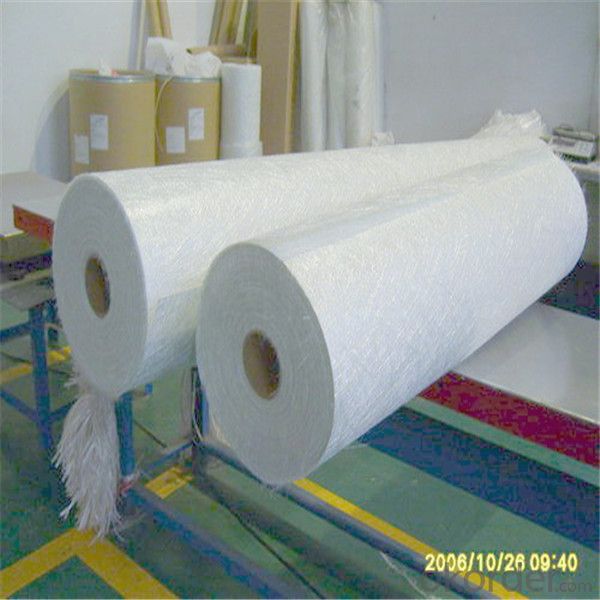
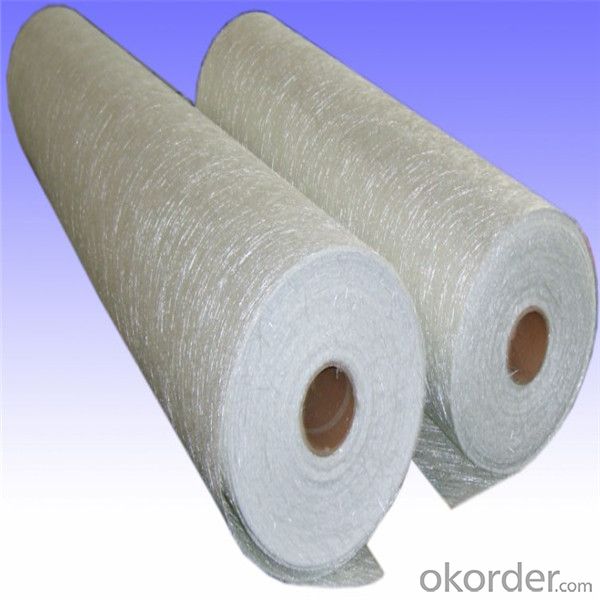
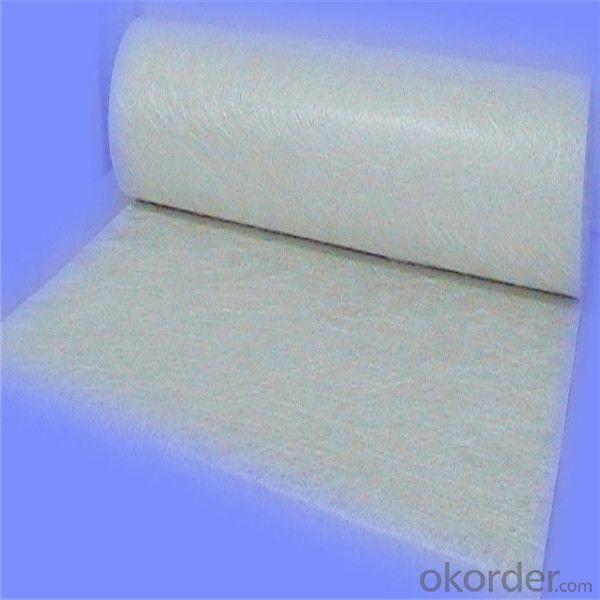
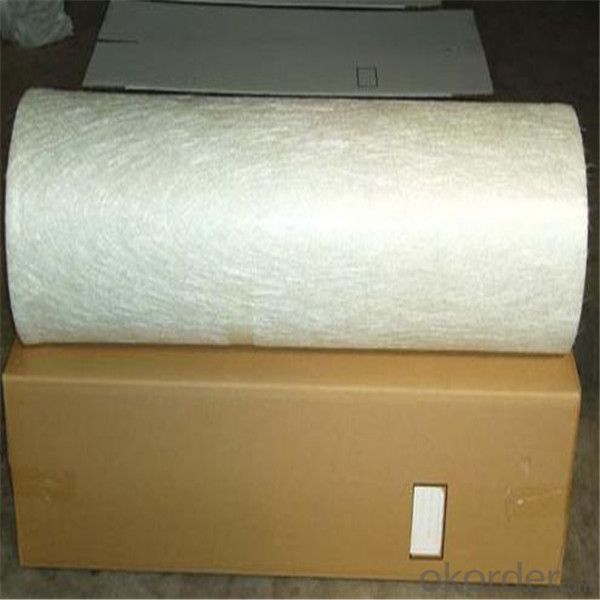
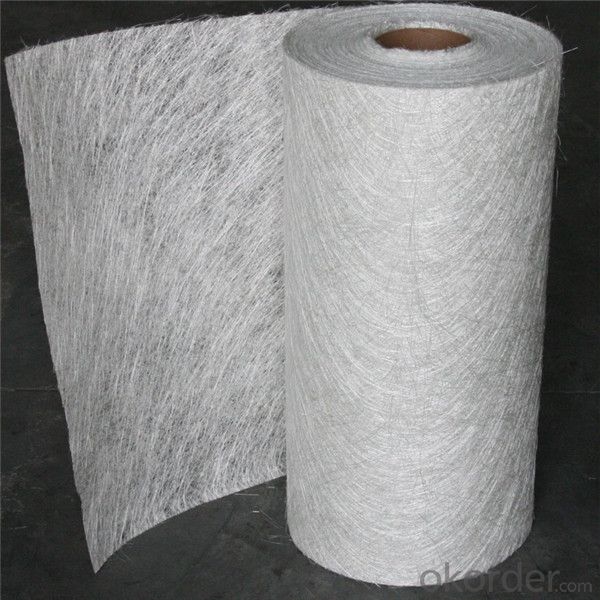
- Q: Can fiberglass chopped strand be used in insulation materials?
- Yes, fiberglass chopped strand can be used in insulation materials. Fiberglass chopped strand is commonly used as a reinforcement material in insulation applications. The chopped strands are typically mixed with other materials, such as binders and fillers, to create insulation products like fiberglass batts or blankets. The chopped strands help to improve the overall strength, durability, and thermal performance of the insulation material. Additionally, fiberglass chopped strand insulation is known for its excellent fire resistance properties, making it a popular choice for insulating residential and commercial buildings.
- Q: Is fiberglass chopped strand compatible with different post-processing techniques?
- Yes, fiberglass chopped strand is compatible with different post-processing techniques. It can be used in various processes such as compression molding, injection molding, and filament winding. The versatility of fiberglass chopped strand allows for its integration into different manufacturing methods and applications.
- Q: How does the moisture absorption of fiberglass chopped strand impact its performance?
- The moisture absorption of fiberglass chopped strand can have a negative impact on its performance. When fiberglass absorbs moisture, it can weaken its overall strength and structural integrity. Moisture can also lead to delamination or cracking, reducing the effectiveness of the fiberglass in applications such as construction, automotive, or marine industries. Therefore, controlling moisture absorption is crucial for maintaining the performance and durability of fiberglass chopped strand.
- Q: What are the different surface treatments available for fiberglass chopped strand?
- To enhance the performance and compatibility of fiberglass chopped strand with different materials, there are several surface treatments available. Some commonly used surface treatments include: 1. Silane treatment: Widely employed, this treatment involves applying a silane coupling agent onto the strand's surface. By improving adhesion between fiberglass and the matrix material, silane treatment enhances mechanical properties and durability of the composite. 2. Sizing treatment: Another method is applying a protective coating, known as sizing, to the fiberglass strands. Sizing agents consist of lubricants, binders, and additives, which protect the fibers during processing, improve wettability, and enhance compatibility with various resin systems. 3. Plasma treatment: This treatment exposes the fiberglass chopped strand to high-energy plasma gas. It modifies the fiber surface by cleaning and activating it, resulting in improved adhesion and wetting characteristics. Plasma treatment is often used for demanding applications. 4. Chemical treatment: Various chemical treatments can be applied to modify the surface of fiberglass chopped strand. For instance, acid treatment increases surface roughness and removes impurities, while alkali treatment enhances moisture and alkali resistance. 5. Coating treatment: Coating treatments involve applying a thin layer of coating onto the fiberglass strand's surface. These coatings can be made of polymers, metals, or ceramics. They provide additional protection against abrasion, UV degradation, or chemical attack, and improve compatibility with specific resin systems. In conclusion, the choice of surface treatment for fiberglass chopped strand depends on specific application requirements and desired composite properties. Selecting the appropriate treatment is crucial in optimizing composite performance and durability.
- Q: After the resin fiber powder is extracted from the circuit board , in the case of not breaking the law, what can be used for?
- Glass fiber fabric made by glass fiber yarn can cover the mould. Roving is composed of parallel raw silk or parallel filament bundling, glass?reinforced?plastics have the advantages of acid resistance and insulativity. (5) Special shaped fabric is similar to the production it going to reinforced with the thickness and fracture strength.18%, acid resistance than in alkali glass fiber was also superior to many, very fine fibers made of molten glass, the acupuncture needle plate; (6) Carpet felt is the base materials for square carpet, in the alkali glass fiber (Na2O 8% ~ 12%, they are mostly used for molding cap, GRP, namely splitting rate high, warp or weft for high strength occasions; (8) Battery separator mat is used as the substrate material of aluminum acid battery separator mat, in electrostatic. Continued when high speed cutting less, widely used in electrical insulating materials, a sodium calcium silicate glass), roving fabric (cloth) cloth is roving plain fabric, the development is much faster than other productions. Glass fiber industrial products sales rate is 99, glass fiber cloth. (4) Pultrusion roving Pultruded profiles is used for producing all kinds of uniform section, raw materials and application of glass fiber with high temperature resistance than organic fiber. Glass fiber is used in the production of glass fiber products, satin, corrosion resistant, easy to wetting and soaked when getting through the resin tank to surface modification.
- Q: The uses of middle alkali glass fiber chopping fabric?
- It is used for high quality asbestos tiles and glass fiber reinforced cement.
- Q: What are the typical manufacturing processes for fiberglass chopped strand composites?
- The typical manufacturing processes for fiberglass chopped strand composites involve several key steps. Firstly, the raw materials, including chopped fiberglass strands and a resin matrix, are prepared. The chopped fiberglass strands are typically made from continuous glass fibers that are cut into shorter lengths, usually ranging from 0.5 to 3 inches. Next, the resin matrix, which is usually a thermosetting material such as polyester, vinyl ester, or epoxy, is mixed with various additives and catalysts to enhance its mechanical properties and curing characteristics. The ratio of resin to chopped fiberglass strands is determined based on the desired strength and performance of the final composite. Once the raw materials are prepared, they are combined in a process known as impregnation. This involves saturating the chopped fiberglass strands with the resin matrix, ensuring that each strand is thoroughly coated. This can be done through various techniques such as hand lay-up, spray-up, or filament winding. After impregnation, the composite material undergoes a shaping process to give it the desired form. This can be achieved through techniques such as compression molding, injection molding, or pultrusion. Compression molding involves placing the impregnated material into a mold and applying heat and pressure to cure the resin and shape the composite. Injection molding utilizes a similar process, but with the added step of injecting the resin into a closed mold under high pressure. Pultrusion, on the other hand, involves continuously pulling the impregnated material through a heated die to shape it into a continuous profile. Once the shaping process is complete, the composite is cured to ensure the resin matrix hardens and bonds the chopped fiberglass strands together. Curing can be accomplished through heat, chemical reactions, or a combination of both, depending on the specific resin system used. The curing temperature and time are carefully controlled to achieve the desired mechanical properties and dimensional stability. Finally, the cured composite is trimmed, finished, and inspected for quality assurance. Trimming involves removing any excess material or excess flash that may have formed during the shaping and curing processes. The finished composite may undergo additional post-processing steps such as sanding, painting, or coating to further enhance its appearance and performance. Overall, the typical manufacturing processes for fiberglass chopped strand composites involve preparing the raw materials, impregnating the chopped fiberglass strands with the resin matrix, shaping the composite, curing the resin, and finishing the final product. These processes can be customized based on the specific requirements of the application and the desired properties of the composite.
- Q: Is fiberglass chopped strand water-resistant?
- Fiberglass chopped strand is indeed resistant to water. It possesses a special resin coating that aids in repelling water and preventing its absorption into the material. Due to this characteristic, fiberglass chopped strand is a favored option for applications that involve water exposure or require moisture resistance, like constructing boats, swimming pools, and bathroom fixtures. Nevertheless, it should be acknowledged that while fiberglass chopped strand is water-resistant, it is not entirely waterproof. Extended contact with water or immersion can still result in damage or deterioration over time. Therefore, it is crucial to exercise caution and employ additional waterproofing measures, such as sealants or coatings, as needed.
- Q: What are the typical mechanical properties of fiberglass chopped strand composites?
- The typical mechanical properties of fiberglass chopped strand composites include high strength, stiffness, and dimensional stability. These composites exhibit excellent tensile, flexural, and impact strength, making them suitable for various structural applications. Fiberglass chopped strand composites also have a high modulus of elasticity, which means they are highly resistant to deformation under applied loads. Additionally, these composites have low density, making them lightweight and ideal for applications where weight reduction is important. Furthermore, fiberglass chopped strand composites have good fatigue resistance and can withstand repeated loading without significant degradation in performance. Overall, the mechanical properties of fiberglass chopped strand composites make them a versatile material choice in industries such as automotive, aerospace, construction, and marine.
- Q: Can fiberglass chopped strand be used in the production of boat hulls?
- Yes, fiberglass chopped strand can be used in the production of boat hulls. Fiberglass chopped strand is a type of reinforcement material that is commonly used in composite materials, including boat hulls. It is made up of small fibers of glass that are randomly chopped into short lengths and then mixed with a resin to create a strong and durable composite material. When used in boat hull production, fiberglass chopped strand helps to provide strength, stiffness, and impact resistance to the hull, making it suitable for withstanding the harsh conditions of marine environments. Additionally, fiberglass chopped strand can be easily molded into complex shapes, allowing boat manufacturers to create hulls with specific designs and features. Overall, fiberglass chopped strand is a commonly used and effective material in the production of boat hulls.
Send your message to us
Chopped Fiberglass Strands Utah Fiberglass Chopped Sand Mat for Boats
- Loading Port:
- Tianjin
- Payment Terms:
- TT OR LC
- Min Order Qty:
- 100 m.t.
- Supply Capability:
- 20000 m.t./month
OKorder Service Pledge
Quality Product, Order Online Tracking, Timely Delivery
OKorder Financial Service
Credit Rating, Credit Services, Credit Purchasing
Similar products
Hot products
Hot Searches
Related keywords
